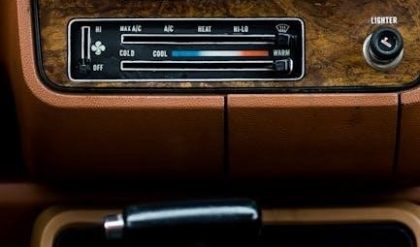Black & Decker 12 Cup Programmable Coffee Maker⁚ A Comprehensive Guide
This guide provides a thorough overview of the Black & Decker 12-cup programmable coffee maker, covering its operation, maintenance, and troubleshooting. Learn to program the timer, understand brew strength control, and utilize the Sneak-A-Cup feature for that early morning caffeine fix. Detailed instructions ensure optimal performance and longevity of your appliance.
Intended Use and Safety Precautions
This Black & Decker 12-cup programmable coffee maker is designed solely for brewing filter coffee, as detailed in this user manual. Do not use it for any other purpose. Always ensure the appliance is placed on a stable, level, heat-resistant surface away from water sources and flammable materials. Before each use, inspect the coffee maker for any damage. Never operate the appliance with a damaged cord or plug. Unplug the coffee maker before cleaning or performing any maintenance. Keep the coffee maker out of reach of children and pets. Always use cold, filtered water in the reservoir to prevent mineral buildup and ensure optimal brewing. Never attempt to repair the appliance yourself; contact a qualified technician for any repairs. Always unplug the appliance from the power outlet when not in use and before cleaning. Failure to follow these safety precautions may result in injury or damage to the appliance. Refer to the troubleshooting section for common issues. This appliance is intended for household use only.
Water Reservoir and Filling Instructions
Locate the water reservoir, typically a clear, removable tank on the back or side of the coffee maker. Before filling, ensure the coffee maker is unplugged from the power outlet. Use only cold, fresh, filtered water to prevent mineral deposits that can affect the taste of your coffee and the longevity of your appliance. Never use hot water; doing so can damage the internal components. The reservoir features clear markings indicating water levels for different cup sizes; fill to the desired level, corresponding to the number of cups you intend to brew. Avoid overfilling the reservoir, as this can cause leakage and potentially damage the coffee maker. Once filled to the appropriate level, carefully replace the water reservoir into its designated slot, ensuring it’s securely fastened. If you notice any leakage, immediately stop using the appliance and check for any obstructions or damage. Always refer to the illustrations in your user manual for precise placement and alignment. Consistent water levels are crucial for maintaining a consistent coffee brewing strength. Always ensure the lid of the water reservoir is firmly closed before initiating the brewing process.
Brewing Process⁚ Step-by-Step Guide
Begin by ensuring the water reservoir is filled to the desired level with cold, fresh water, aligning with the markings for your intended cup quantity. Next, add your preferred amount of ground coffee to the filter basket; the quantity will depend on your desired strength. Avoid overfilling the basket, as this can lead to overflowing and a weaker brew. Once the coffee grounds are in place, carefully insert the filter basket into its designated location within the coffee maker. Now, firmly place the empty carafe onto the warming plate, ensuring it’s properly seated. Plug the coffee maker into a functioning electrical outlet. To initiate the brewing process, press the “ON” or “Brew” button. The coffee maker will begin heating the water and subsequently dispensing it over the coffee grounds. The brewing process takes approximately 10-15 minutes, depending on the amount of water used. During brewing, avoid disturbing the appliance. Once complete, the machine will automatically switch off, and your freshly brewed coffee will be ready to enjoy. Always allow the carafe to cool slightly before handling to prevent burns. Remember to regularly clean the filter basket and carafe after each use for optimal performance and hygiene.
Programming the Coffee Maker⁚ Setting the Timer
To utilize the programmable timer feature, begin by filling the water reservoir and adding your preferred amount of ground coffee to the filter basket, as previously described in the brewing process section. Next, locate the clock and timer settings on the control panel. Using the designated buttons, set the current time accurately. This is crucial for the timer function to work correctly. Then, select your desired brewing time using the timer settings. The timer allows you to program the coffee maker to start brewing at a specific time, ensuring your coffee is ready when you are. This is particularly helpful for waking up to the aroma of freshly brewed coffee. After setting the desired brewing time, confirm your selection. The display should show the programmed brewing time clearly. Once programmed, the coffee maker will automatically begin brewing at the pre-selected time. Ensure the coffee maker is plugged in and the carafe is correctly placed. The programmable feature helps automate your morning routine, providing a convenient and consistent way to start your day with a delicious cup of coffee. Remember to check the water level and coffee grounds before setting the timer to avoid potential issues. Refer to the quick-start guide for visual assistance.
Cleaning and Maintenance
Regular cleaning is essential for maintaining the optimal performance and longevity of your Black & Decker 12-cup programmable coffee maker. After each use, allow the coffee maker to cool completely before cleaning. Unplug the appliance from the power outlet for safety. Empty the used coffee grounds from the filter basket and rinse it thoroughly with warm, soapy water. Clean the carafe using warm, soapy water; ensure to avoid abrasive cleaners or scouring pads that can scratch the glass; Wipe the exterior of the coffee maker with a damp cloth. For stubborn stains or mineral deposits, a solution of equal parts water and white vinegar can be used. Fill the water reservoir with this solution, run a brew cycle, and then rinse thoroughly with clean water. The carafe plate may also accumulate residue, which can be cleaned using a damp cloth and mild detergent. Avoid immersing the coffee maker’s base in water. Regular descaling, ideally every few months depending on water hardness, is crucial. This prevents mineral buildup and ensures efficient brewing. Always refer to the manufacturer’s instructions for specific cleaning recommendations and warnings. Proper cleaning and maintenance will extend the lifespan of your coffee maker, guaranteeing consistently delicious coffee for years to come. Remember to always unplug the appliance before cleaning.
Troubleshooting Common Issues
Should your Black & Decker 12-cup programmable coffee maker encounter issues, this section offers solutions to common problems. If the coffee maker isn’t brewing, first ensure it’s properly plugged in and the power outlet is functioning. Check that the water reservoir is filled to the appropriate level and that the carafe is correctly positioned on the warming plate. Weak coffee might indicate insufficient coffee grounds or overly fine grinds. Experiment with the brew strength setting or adjust the coffee-to-water ratio. If the coffee is too strong, reduce the amount of coffee grounds or switch to a coarser grind. A leaking coffee maker often points to an overfilled water reservoir; ensure it’s filled to the maximum line. If the coffee is not hot enough, check that the warming plate is functioning correctly and that the carafe is properly seated. If the coffee maker doesn’t turn off automatically, inspect the auto-off function settings. Persistent problems should prompt a careful review of the user manual, and if the issue remains unresolved, contacting customer support is recommended. Remember to always unplug the appliance before attempting any troubleshooting steps. Addressing these common issues proactively maintains optimal brewing performance and enhances the longevity of your Black & Decker coffee maker.
Understanding Brew Strength Control
The Black & Decker 12-cup programmable coffee maker often includes a brew strength control feature, allowing you to customize the intensity of your coffee’s flavor profile to your personal preference. This feature typically offers two settings⁚ regular and bold. Selecting “regular” produces a milder, less intense brew, ideal for those who prefer a lighter, more delicate coffee experience. Conversely, choosing “bold” results in a richer, more robust flavor with a more pronounced intensity. This setting extracts more of the coffee’s oils and compounds, delivering a stronger, more assertive taste. The exact mechanism varies slightly depending on your specific model; some models may adjust the water temperature or brewing time, while others might subtly alter the water-to-coffee ratio. Experimentation is key to discovering your perfect brew strength. Start by trying both settings and noting the differences in taste. Consider factors such as your preferred coffee bean type and grind size, as these also significantly influence the final brew strength. Remember that a finer grind generally produces a stronger cup, even on the “regular” setting. Adjusting the grind size in conjunction with the brew strength control offers a wider range of flavor customization options, allowing you to fine-tune your coffee experience to perfection.
Using the Sneak-A-Cup Feature
Many Black & Decker 12-cup programmable coffee makers incorporate a convenient “Sneak-A-Cup” feature, designed for those mornings when you need a quick cup of coffee before the full pot is brewed. This feature allows you to pour a single cup of coffee from the coffee maker without interrupting the brewing cycle. To use this function, simply press the designated “Sneak-A-Cup” button (the exact button name and location may vary slightly depending on your model). This will temporarily pause the brewing process, allowing you to pour a cup of freshly brewed coffee. Once you’ve poured your cup, the brewing cycle will automatically resume, completing the brewing process and filling the carafe. This feature is particularly useful if you’re in a rush or if you only need a single serving of coffee. It eliminates the need to wait for the entire pot to brew before enjoying your morning beverage. Remember to replace the carafe after pouring your cup to avoid spills or any interruptions to the brewing process. The “Sneak-A-Cup” functionality is a thoughtful addition that adds convenience and flexibility to your coffee-making routine, allowing you to customize your coffee consumption experience to meet your individual needs and schedule.
Carafe and Other Replacement Parts
Over time, normal wear and tear may necessitate replacing certain components of your Black & Decker 12-cup programmable coffee maker. The glass carafe, being the most frequently handled part, is prone to accidental breakage. Replacement carafes are readily available from authorized retailers or online marketplaces; always ensure you purchase a carafe specifically designed for your coffee maker model to guarantee a proper fit and function. Beyond the carafe, other parts may require replacement, such as the water filter (if applicable to your model), the thermal plate, or the power cord. Check your user manual for specific part numbers to aid in ordering replacements. When purchasing replacements, verify compatibility with your specific model number to avoid purchasing incompatible parts. Regular inspection of your coffee maker can help identify potential issues before they escalate into major problems. Addressing minor wear and tear promptly can significantly extend the life and efficiency of your appliance, ensuring many years of reliable coffee brewing. Proper care and timely replacement of parts are key to maintaining optimal performance and enjoying delicious coffee consistently.
Specifications and Technical Details
Understanding the technical specifications of your Black & Decker 12-cup programmable coffee maker is crucial for optimal operation and troubleshooting. Key specifications typically include the coffee maker’s voltage (e.g., 120V), wattage (indicating power consumption), and frequency (usually 60Hz). The water reservoir capacity is usually clearly stated, often in cups or milliliters, corresponding to the 12-cup brewing capacity. Dimensions (height, width, and depth) are helpful for placement considerations in your kitchen. The weight of the coffee maker provides an indication of its build quality and material. The type of carafe (glass or thermal) is a significant feature influencing heat retention and durability. Other specifications may include details about the heating element, the type of programming interface (digital or analog), and any safety features incorporated, such as automatic shutoff. This information is typically found on a label affixed to the coffee maker itself or within the user manual. Refer to your specific model’s documentation for accurate and detailed specifications. Knowing these details can help you understand power requirements, space limitations, and the overall performance capabilities of your coffee maker.





